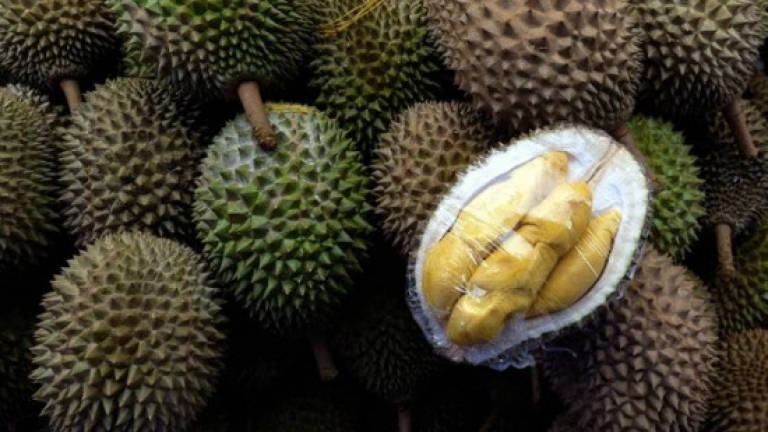Right planting techniques produce quality 'Musang King' durians

KUALA LUMPUR: Farmers who wish to grow durian trees, especially the 'Musang King' or D197 have been reminded to learn the right planting techniques and to plant different varieties in order to achieve the best quality.
Serdang Agriculture Department Horticulture Division assistant director Mohd Auzaie Komarudin said although Musang King, also known as "Raja Kunyit", is the most sought after durian among customers, farmers were recommended to grow at least three varieties of durians in the same farm.
"If farmers want to plant 100 durian trees, they can adopt the mixed cultivation concept involving three types on the 60:20:20 ratio, namely 60 Musang King and 20 each from the other varieties," he told Bernama at the department's farm in Serdang near here recently.
Mohd Auzaie said it was recommended the mix include the D24, otherwise known as "Bukit Merah" or the 'Sultan', and D168 (IOI or "Hajah Hasmah") durians.
He said the trees should be at least 10 metres apart, and that the mixed cultivation technique was important to ensure a smooth pollination process and to achieve a better yield by not having to rely on a single type.
"Farmers can also grow the D99 or "Cop Kecil" for good harvests and in fact, it has a longer fruiting period than other varieties," he said.
Mohd Auzaie said farmers needed to be extra sensitive to the condition of the saplings and look out for pest threats such as termites, stem borer beetles and leaf-eating insects, as well as take precautionary measures by spraying pesticides and using appropriate fertilisers to increase their defence mechanism.
"Saplings should also be protected from being exposed to too much to the sun and if they grow healthy, farmers can harvest as early as five years. Normally, the durian season is July to Dec," he said.
However, Mohd Auzaie said each tree would only produce about 20 durians the first time.
"More fruits will be produced, up to 50 durians per tree, once it reaches the 10th year onwards, he said.
In order to ensure that the fruits are of the highest quality and can be exported overseas, Mohd Auzaie said farmers should install safety nets at the bottom part of each tree to ensure that falling durians would not hit the ground, causing broken or split fruits.
"Without the nets, the fruit will fall and roll over on the ground. This will reduce its value as durians with soil residue found on the skin is not accepted for export," he added. — Bernama